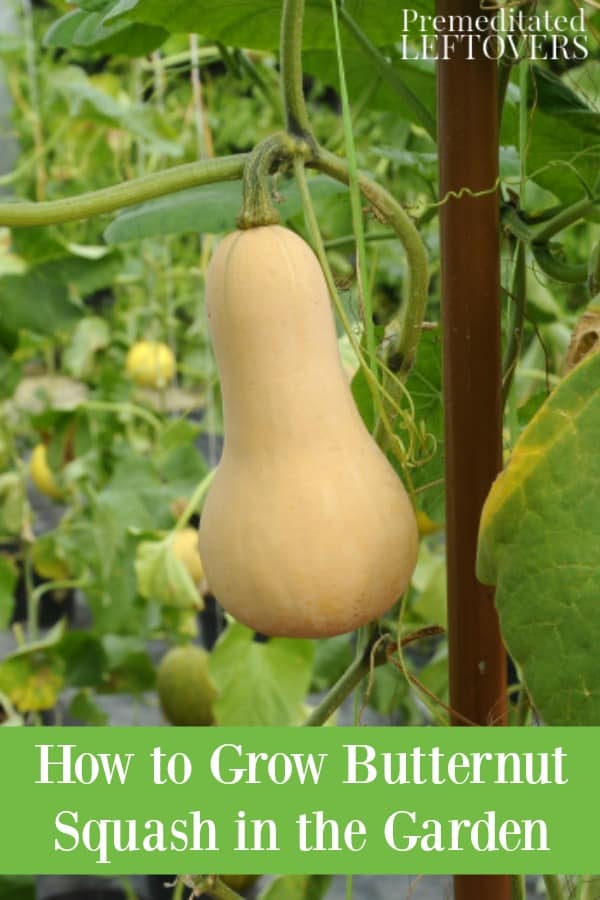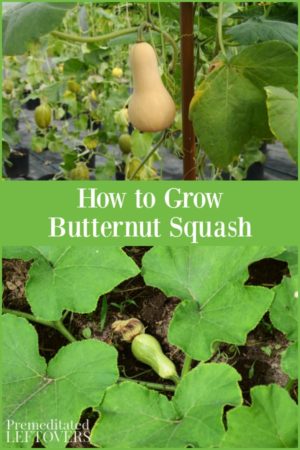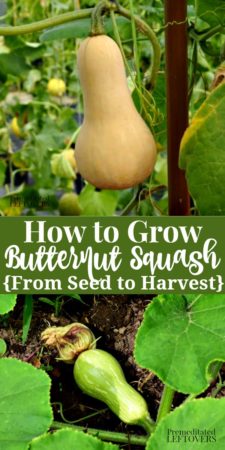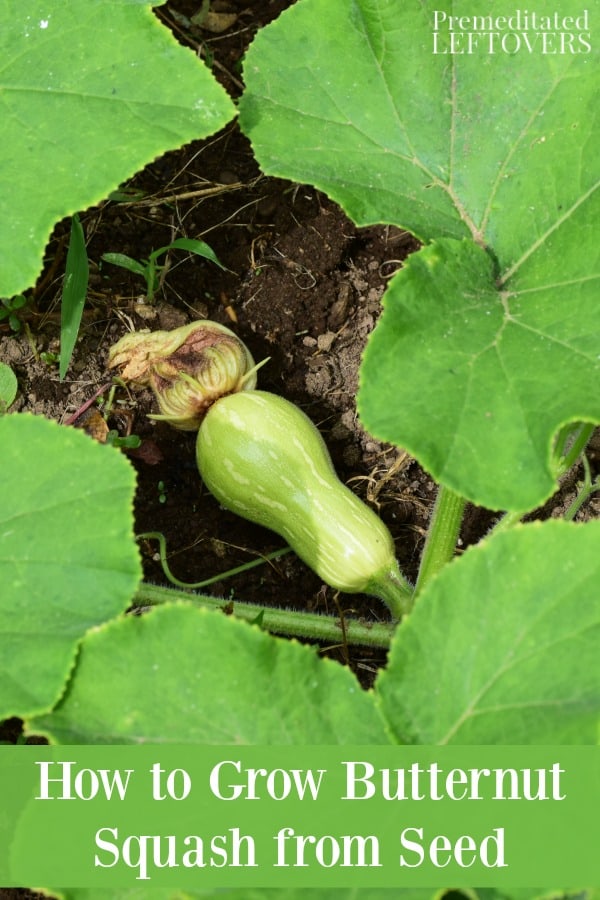This guide on how to grow butternut squash will teach you how to plant butternut squash seeds and care for butternut squash plants, and when to harvest butternut squash.

Butternut squash is a sweet tasting squash that can be enjoyed in so many ways. Whether you want to roast it, puree it into soup, or even use it to make baby food, you will find that it is an easy squash variety to grow! If you are considering a squash variety this year, look at these tips on how to grow butternut squash. These tips can help you grow enough squash to last all through the winter months! Here is what you need to know:
How to Grow Butternut Squash
How to plant butternut squash seeds:
Spaghetti squash is a fall bloomer but does require lots of time to mature. To get a head start, you can start your seeds indoors about 4 weeks before the last frost of the winter season. When planting butternut squash seeds, you should use peat pots that can be planted directly in the ground along with the seedling in order to leave the roots as undisturbed as possible.
When planting your butternut squash seeds, use a nutrient-rich soil, keep the soil moist at all times, and provide the seeds with at least 6 hours of direct sun per day. No sun? No problem! You can always use an artificial light source to warm the plants and encourage germination.
How to plant butternut squash seedlings:
Butternut squash seedlings won’t like to be planted until the threat of frost has passed. When the soil temperature has reached 70 degrees, then you can prepare to transplant. Choose a planting space that gets partial to full sun, has soil that drains well, and has at least 50 square feet for the squash to grow.
Use the mound method when planting butternut squash seedlings. To plant the seedlings, create a mound that is 3 inches tall. You want the mound to be at least the length of the root of your seedling and at least 3 times the width. Add lots of compost and fertilizer to your mound, as butternut squash seedlings are big eaters!
Now just place the seedling in the mound and add some loose soil around the base. If your seedlings are at least 3 inches tall, one seedling per mound is advised. If your seedlings are still young, add three and then thin out the weaker seedlings in a few weeks.
Once your butternut squash seedlings have been planted, use some compost around the mound to add some nutrients to the soil, and place some mulch around the base of the plant to help keep roots moist. Butternut squash appreciates cooler soil, and mulch can help with that. Re-apply through the season as needed.
Butternut squash needs a good 50 square feet to grow. Because of this, you should avoid planting in containers. Spacious raised beds will work for this plant, but you should avoid any type of container or pot.
How to care for butternut squash seedlings:
Butternut squash plants do best when watered evenly, so keep that in mind when feeding. Apply water directly to the base of the plant to better feed the roots and keep the outer foliage from burning. You can help keep roots and soil cool by applying a thick layer of mulch around the base of the plant.
Because butternut squash is a heavy feeder, feel free to feed with a liquid plant food or fertilizer every 3-4 weeks. Keep the fertilizer at the base of the plant to avoid foliage burning as well.
How to prevent pests on butternut squash plants:
This sweet squash can be a favorite among critters. You may see squirrels and even raccoons who want to nibble. Providing garden fencing can help keep those pests at bay. You can also find some over the counter pest sprays that are supposed to repel larger garden pests that would love to dine! If you spot bugs, take care to remove these pests by hand or use a natural and food safe pest control spray.
When to harvest butternut squash:
While butternut squash needs about 3.5 months to mature, the skin of the squash will tell you when it is ready to be harvested. Most varieties will be ready mid-fall and should be collected before the first frost of the winter season. Cut the butternut squash from the vine when the skin is hard and can’t be pierced with a fingernail.
Once harvested, you can store the squash in a cool and dry place where it will stay fresh for weeks. As long as the skin remains intact, it will protect the inner fruit well. There are all sorts of ways to enjoy this nutritious squash, and as mentioned it can even be enjoyed in baby food recipes.
Consider these tips on how to grow butternut squash and get growing!




Andy says
How do i know when.to pick my butternut and what coulor should it be first time grower thanks
Fathima says
Hi…my butternut are forming but then shrinking..why is this happening
Quita says
This is actually the female flower (it has a mini fruit started) but unless it gets pollinated by a make it will shrink and die.
Karen hillman says
I’ve grown butternut squashes for first time this year. I’ve got lots of flowers but all seen to be male. Does a squash plant only produce same sex flowers?
Jimmy says
Hello. What was your spacing distance between main stalks? I like to keep mine w/ the largest outer leaves just overlapping. It’s a SWAG guess, yet fun. Anyone else reading, please feel free to jump in and reply on your spacing in inches please. No metric is fine. I’m just playing.
Jimmy says
FYI: Starting your seeds in a 18”x18” / 20” or so works very well. Light, recyclable, insulated, and roomy. Try it out!!! I’m positive you all will like it. I have access to these coolers because my mother gets food delivered from all around the world to her house, and they always come in these durable Styrofoam coolers with dry ice, so might not be for everybody, but maybe you or your neighbor is similar. Happy gardening.
Kathy says
My friend harvested her butternut squash when it still had green on it as pictured in your article. Is that ripe enough? It was not easily pierced with a fingernail if that is the best test. Thank you.
Uzo says
I harvested mine when they were huge although slightly green. I didn’t want to risk leaving them out too late to avoid pests. Started harvesting in late August
I rinsed them off and placed on kitchen counter. In about a month they turned a beautiful caramel color
I harvested about 20, gave a bunch away and still lots left over . Still very fresh and now a slight caramel color
Dale godfrey says
Last year my butternut squash looked more like spagety squash than butternut squash and weren’t solid in the neck area. the meat tasted fine but was less of it. what did I do wrong